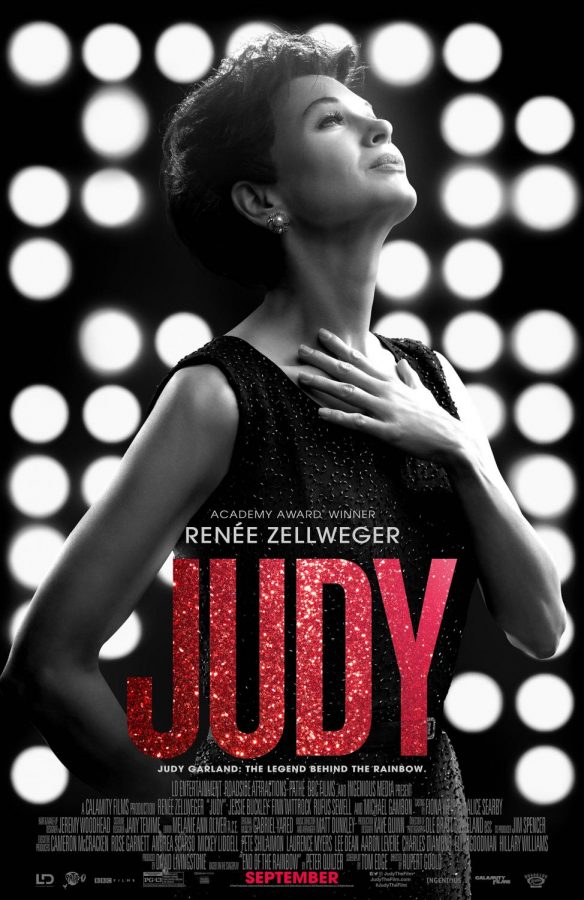Judy tells the tragic story of Judy Garland’s life—beyond the rainbow
More stories from Molly Dixon

When most people think of Judy Garland, one thing comes to mind: The Wizard of Oz. Garland played Dorothy in the 1939 film and became an immediate American sweetheart upon its release. She started filming the movie at the age of sixteen, and the fame and fortune that she quickly gained made her an emblem of envy for many young girls.
However, beneath her seemingly luxurious film life, Judy deeply struggled with alcoholism, depression, and financial issues.
Garland’s riveting, tragic story is often concealed under the whimsical world of Oz, but in director Rupert Goold’s new film, Judy, the harsh reality that was Garland’s life is divulged.
The movie opens on the set of The Wizard of Oz and shows young Garland—played by Darci Shaw—getting ready for a day of filming. The scene leaves an uncomfortable impression, as it shows Garland being manipulated and threatened by her manager when she complains of being tired. The beginning scene leads to the main focus of the movie: Garland’s life in her mid-forties.
An older Garland is the focus of the majority of the movie and is skillfully portrayed by Renée Zellweger who captured Garland’s constant perturbation to perfection.
The plot of the movie is revealed when Garland, who has ruined her once-flourishing career in America with her instability and drug usage, is forced to travel to London, England in order to sustain a salary. Garland is heartbroken by this, as she must leave her beloved children in the United States.
The movie takes a while to develop the plot, but the acting and mystery of the film kept me interested. I enjoyed witnessing Zellweger replicate the undeniable trance that Judy Garland placed on people. The acting made it clear to me that even at her worst, Garland tried to be positive and always exuded a loving, kind spirit.
Through various flashbacks to Garland’s time on the set of The Wizard of Oz, it is unveiled how Garland became dependent on drugs. Because of the demanding schedule for filming, Garland was coerced into a brutal cycle of taking amphetamines (energy-boosting drugs) and barbiturates (sleep-inducing drugs). In her mid-forties, Garland was still struggling with performing menial tasks without the help of these substances.
As the movie transitions into the setting of London, more of Judy’s life is revealed. In her adventures in England, Garland resolved her financial issues but found her mental condition deteriorated without the presence of her children. Garland performed in several London shows, and Zellweger showcased her own vocal abilities by covering some of Garland’s most popular songs. The musical element of the movie enthralled me; it allowed me to see Judy’s love for the stage, even if her fame was the eventual catalyst for her destruction—and ultimately, her death.
I reveled in the way director Rupert Goold seamlessly transitioned from events in the past to the present; it provoked within me a sense of clarity.
The technicalities of the movie were important, but one aspect was most impressive for me. I felt that the writing, which was executed by Tom Edge, was masterful. I was completely engrossed in the film from beginning to end.
Overall, the movie truly encapsulated the intriguing, influential life of Garland, and I found the truth behind it refreshing. It is too common nowadays to see the secret lives and struggles of celebrities hidden in an attempt to make their reputations spotless. But these ostensibly perfect reputations are almost always a façade. The fact that Judy shed light on the struggles of a star, let alone a star as big as Garland, was satisfying.
Discovering the truth behind the obstacles and hardships that she had to overcome left me with a deeper respect and admiration for Judy Garland when the credits rolled.

























































































Beylul Kahsay • Nov 13, 2019 at 1:24 pm
You’re such an amazing writer!! I’m definitely going to check out this film now!